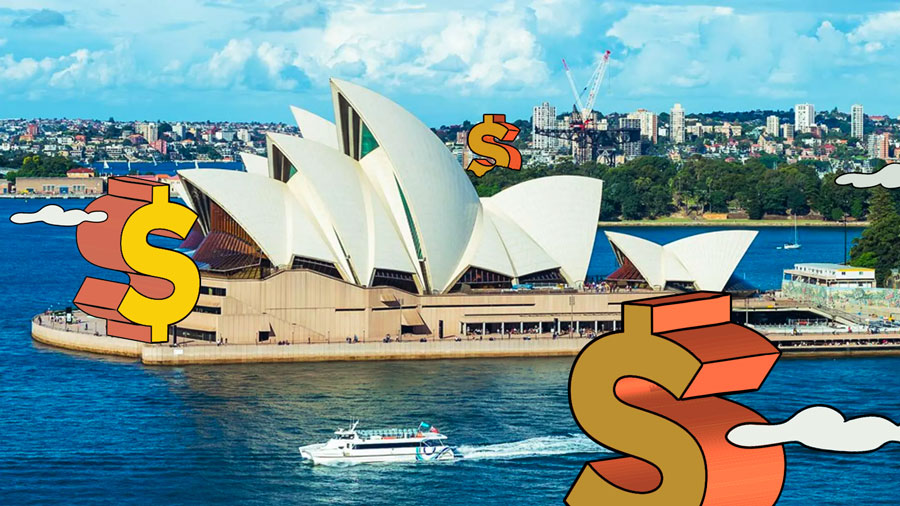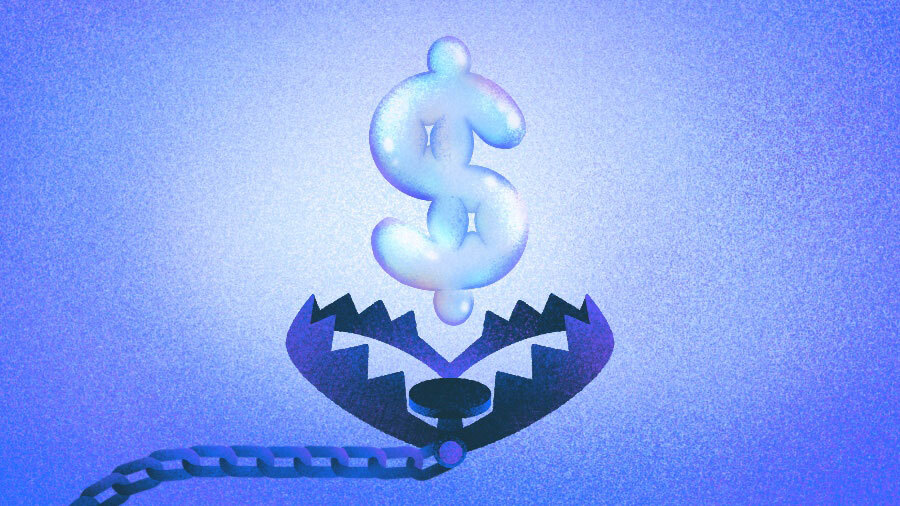All Stories

The State Of Startups In 7 Charts: These Sectors And Stages Are Down As AI Megarounds Dominate In 2025
Venture funding has most definitely rebounded since the 2022 correction, but there’s a sharp divide between who’s getting funding and who’s not. That was the overarching theme from our third-quarter market reports, which showed that global startup funding in Q3 totaled $97 billion, marking only the fourth quarter above $90 billion since Q3 2022. Still, there are stark differences between the 2021 market peak and now, as contributing reporter Joanna Glasner noted in a couple of recent columns, here and here. Just as we saw four years ago, funding is frothy and often seems to be driven by investor FOMO. Some companies are even raising follow-on rounds at head-spinning speeds. But the funding surge this time is also much, much more concentrated — namely in outsized rounds for AI companies. With that, let’s take a look at the charts that illustrate the major private-market and startup funding themes as we head into the final quarter of 2025. AI funding continues to drive venture growth Nearly half — 46% — of startup funding globally in Q3 went to AI companies, Crunchbase data shows. Almost a third went to a single company: Anthropic, which raised $13 billion last quarter. Even with an astonishing $45 billion going to artificial intelligence startups in Q3, it was only the third-highest quarter on record for AI funding, with Q4 2024 and Q1 2025 each clocking in higher. Megarounds gobble up lion’s share It shouldn’t come as too much of a surprise that AI has also skewed investment heavily toward megarounds, which we define as funding deals of $100 million or more. The percentage of overall funding going into such deals hit a record high this year, with an astonishing 60% of global and 70% of U.S. venture capital going to $100 million-plus rounds, per Crunchbase data. Even with several months left in the year, it also seems plausible that the total dollars going into such deals will match or top what we saw in 2021, which marked a peak for startup funding not scaled before or since. The difference? Back then, startup dollars were widely distributed, going to a whole host of sectors — from food tech to health tech to robotics — and to early-stage, late-stage and in-between companies alike. Contrast that with recent quarters, when the LLM giants and other large, established, AI-centric companies are getting the largest slice of venture dollars. Seed deals slide further As megarounds have increased, seed deals have declined. The number of seed deals has shown a steady downward trend in recent quarters, Crunchbase data shows, even as total dollars invested at the stage has stayed relatively steady. That indicates that while seed deals are growing larger, they’re also harder to come by. Early-stage funding has essentially flatlined, despite larger rounds to companies working on robotics, biotech, AI and other technologies. The AI haves and have-nots AI has enthralled investors for the past three years. What are they less interested in? Old standbys like cybersecurity and biotech. Biotech investment as a share of overall funding recently hit a 20-year low. Crunchbase data shows that cybersecurity investment, while still relatively steady, also retreated somewhat in Q3 2025. That’s notable given that many cybersecurity companies are integrating AI into their offerings. Still, other sectors that benefit heavily from AI-driven automation are seeing a surge in investment. Perhaps most notable is legal tech, which hit an all-time high last month on the back of large rounds for companies promising to automate much of the drudgery of the profession. Among the other sectors buoyed by AI is human resources software (including AI-powered recruitment and hiring offerings). Other data points of note Other interesting points that emerged from our Q3 reports and recent coverage include: Looking ahead The increasing concentration of capital into a small cadre of large AI companies — not to mention the interconnectedness of those deals — begs some obvious questions. Are we in a bubble? And given that nearly half of venture capital in recent years has been tied up in AI, what happens to the startup ecosystem if or when it pops? Related reading: Illustration: Dom Guzman
I Was Fired From My Own Startup. Here’s What Every Founder Should Know About Letting Go
By Yakov Filippenko No founder plans for the day they get fired from their own company. You plan for funding rounds, product launches and exits, but not for the boardroom moment when everyone raises their hand, and you realize your journey inside the company is over. It happened to me. I called that board meeting. I set the vote. We had to choose who would stay, me or my co-founder. The vote didn’t go my way. In movies, this is where the music swells and the credits roll. Steve Jobs after John Sculley. Travis Kalanick after Bill Gurley. In real life, there’s no cinematic pause. No final scene. Just the quiet realization that everything you built now belongs to someone else. What follows isn’t drama, either. It’s disorientation. And like most founders, I had no idea how to handle it. Don’t fill the silence too fastYakov Filippenko When it ended, I filled my calendar with aimless meetings. Five or six a day. Not because they had any real purpose, but because it felt strange not to be doing business. For more than 10 years, I’d never had a day when I didn’t have to think about work. A startup teaches you to fix things fast. When you’re out, though, there’s nothing left to fix. Only yourself. Getting pushed out isn’t like missing a quarterly target. It’s like losing the story you’ve been telling yourself for years. The hardest part is that you don’t know who to blame. Investors? They were doing their job. Yourself? Every decision made sense in context. So the frustration lands on the person closest to you. Your co-founder. It’s not about logic. I would say it is more of a defense mechanism. It’s how the mind tries to make sense of loss. Learn to see the pattern For months, I kept asking: What did we do wrong? It took me a couple of years to see the pattern. Later, working inside a venture fund helped me see the truth. I saw the same story play out again and again. Founders repeating the same emotional arc, as follows: Every time, the same sequence. And when the dream fades, blame fills the gap. The pattern itself is that the anger toward a co-founder is often a projection of disappointment from a failed deal. If that energy isn’t processed consciously, it finds its own way out, usually as anger. You can’t really be mad at yourself; you did everything right. The other side acted in their own interest. So it lands on the person next to you, your co-founder and your team, and for them, it’s you. And that’s where I have a bit of a claim toward investors because they often see this dynamic coming and could at least warn founders about it. Once I recognized the pattern, I stopped seeing my story as a failure. It was part of a cycle almost every founder goes through, only most don’t talk about it. Trade strategy for emotional tools Traditional business tools didn’t help. OKRs, planning sessions, strategy off-sites, none of it worked on the inner collapse that comes when your identity and your company split apart. This led me to begin studying Gestalt therapy. It gave me the language to understand how situations like this actually work, their cycles, causes and effects, and how to think about them with the right awareness and perspective. One part of building startups isn’t about pivots or fundraising. It’s realizing how much of yourself you’ve tied to the story you’re telling the world. The point is to first get conscious of your anger, and then let it out. Acceptance comes in stages Acceptance doesn’t show up all at once. It arrives in pieces. For me, the first piece came when I watched another founder go through the same breakdown and recognized every stage. The second came when my first startup was acquired. Not at the valuation I’d dreamed of, but enough to accept that it continued without me. The third came with my current company, Intch, which is built from calm, not from fear. I no longer measure success by control, but by clarity. What I’d tell a founder in that room Here’s what I’d share now with another entrepreneur who finds themselves in the same situation. Founders are trained to manage everything except their own psychology. But startups are way more than capital and code. They run on the emotional architecture of the people who build them. And when that structure breaks, rebuilding it is the most important startup you’ll ever work on. Yakov Filippenko is a seasoned entrepreneur with more than 10 years of experience in IT and technologies, as well as scaling businesses internationally. As a product manager at Yandex, he led a team that grew the product’s user base from 500,000 to 1.2 million and secured its entry into the international market. Subsequently, he co-founded SailPlay, which he scaled to 45 countries and eventually exited, after it was acquired by Retail Rocket in 2018. In 2021, Filippenko launched Intch, an AI-powered platform connecting part-time professionals with flexible roles. Illustration: Dom Guzman
Whatnot Lands $225M Series F, More Than Doubles Valuation to $11.5B Since January
Whatnot, a live shopping platform and marketplace, has closed a $225 million Series F round, more than doubling its valuation to $11.5 billion in less than 10 months. DST Global and CapitalG co-led the financing, which brings the Los Angeles-based company’s total raised to about $968 million since its 2019 inception. Whatnot had raised $265 million in a Series E round at a nearly $5 billion valuation in January. New investors Sequoia Capital and Alkeon Capital participated in the Series F, alongside returning backers Greycroft, Andreessen Horowitz, Avra and Bond. Other investors include Y Combinator, Lightspeed Venture Partners and Liquid 2 Ventures. As part of the latest financing, Whatnot says it will initiate a tender offer where select current investors will buy up to $126 million worth of shares. Funding to e-commerce startups globally so far this year totals $7.1 billion, per Crunchbase data. That compares to $11.3 billion raised by e-commerce startups globally in all of 2024. This year’s numbers are also down significantly from post-pandemic funding totals, which surged to $93 billion in 2021. ‘Retail’s new normal’ Live commerce is the combination of livestreaming and online shopping. Grant LaFontaine, co-founder and CEO of Whatnot, said in an announcement that his startup is “proving that live shopping is retail’s new normal.” Whatnot co-founders Logan Head and Grant LaFontaine. Courtesy photo. The company says more than $6 billion worth of items have been sold on its platform in 2025 so far, more than twice its total for all of 2024. Its app facilitates the buying and selling of collectibles like trading cards and toys through live video auctions. It also offers items such as clothing and sneakers. It competes with the likes of eBay, which currently does not offer a livestreaming option. It’s also a competitor to TikTok Shop. “Whatnot brought the live shopping wave to the US, the UK, and Europe and has turned it into one of the fastest growing marketplaces of all time, Laela Sturdy, Whatnot board member and managing partner at CapitalG, Alphabet’s independent growth fund, said in a release. The company plans to use its new funds to invest in its platform, roll out new features and “evolve” its policies. It is also accelerating its international expansion, adding to its current 900-person workforce by hiring across multiple departments. Related query: Related Reading: Illustration: Dom Guzman
The Infinite Game Of Building Companies
By Jeff Seibert I’ve been building products and companies my entire career — Increo, Box, Crashlytics, Twitter and now, Digits — and I’ve had the privilege of speaking with some of the sharpest minds in venture and entrepreneurship along the way. One recent conversation with a legendary investor really crystallized for me a set of truths about startups: what success really is, why some founders thrive while others burn out, and how to navigate the inevitable chaos of building something from nothing. Here are some of the lessons I’ve internalized from years of building, observing and learning. Success has no finish lineJeff Seibert In the startup world, we talk a lot about IPOs, acquisitions and valuations. But those are milestones, not destinations. The companies that endure don’t “win” and stop — they keep creating, adapting and pushing forward. They’re playing an infinite game, where the only goal is to remain in the game. When you’re building something truly generative — driven by a purpose greater than yourself — there’s no point at which you can say “done.” If your company has a natural stopping point, you may be building the wrong thing. You don’t choose the work — the work chooses you The best founders I’ve met — and the best moments I’ve had as a founder — come from an almost irrational pull toward solving a specific problem I myself experienced. You may want to start a company, but if you have to talk yourself into your idea, it probably won’t survive contact with reality. The founders who succeed are often the ones who can’t not work on their thing. Starting a company shouldn’t be a career move — it should be the last possible option after every other path fails to scratch the itch. The real killer: founder fatigue Most companies don’t die because of one bad decision or one tough competitor. They die because the founders run out of energy. Fatigue erodes vision, motivation and creativity. Protecting your own drive — keeping it clean and focused — may be the single most important survival skill you have. That means staying close to the product, protecting time for customer work, and avoiding the slow drift into managing around problems instead of solving them. Customer > competitor It’s easy to get caught up in competitor moves, investor chatter or market gossip. But the most important question is always: Are we delivering joy to the customer? If you’re losing focus, sign up for your own product as a brand-new user. Feel the friction. Fix it. Repeat. At Digits, we run our own signup and core flows every week. It’s uncomfortable — it surfaces flaws we’d rather not see — but it keeps us anchored to the only metric that matters: customer delight. Boards should ask questions, not give answers Over the years, I’ve learned the most effective boards aren’t presentation theaters — they’re discussion rooms. The best structure I’ve seen: Good directors help you widen your perspective. They don’t hand you a to-do list. Rather, they help you see the problem in a way that makes the answer obvious. Twitter: lessons from a phenomenon When I think back to my time at Twitter, the most enduring lesson is that not all companies are built top-down. Some — like Twitter — are shaped more by their users than their executives. Features like @mentions, hashtags and retweets didn’t come from a product roadmap — they came from the community. That’s messy, but it’s also powerful. Sometimes your job isn’t to control the phenomenon, rather it’s to keep it healthy without smothering what made it magical in the first place. Why now is a great time to start If you’re building today, you have an advantage over the so-called “unicorn zombies” that raised massive rounds pre-AI and are now locked into defending old business models. Fresh founders can design from scratch for the new reality; there’s no legacy to protect, no sacred cows to defend. The macro environment? Irrelevant. The only timing that matters is when the problem calls you so strongly that not working on it feels impossible. If there’s one takeaway from all of this, it’s that success is continuing. The real prize is the ability to keep playing, keep serving and keep creating. If you’re standing at the edge, wondering if you should start — start. Take one step. See if it grows. And if it does, welcome to the infinite game. Jeff Seibert is the founder and CEO of Digits, the world’s first AI-native accounting platform. He previously served as Twitter‘s head of consumer product and starred in the Emmy Award-winning Netflix documentary “The Social Dilemma.” Illustration: Dom Guzman
Crunchbase Sector Snapshot: Cleantech Isn’t Having A Great Year
While startup investment has been climbing lately, not all industries are partaking in the gains. Cleantech is one of the spaces that’s been mostly left out. Overall funding to the space is down this year, despite some pockets of bullishness in areas like fusion and battery recycling. The broad trend: Cleantech- and sustainability-related startup investment has been on a downward trajectory for several years now. And so far, 2025 is on track to be another down year. On the bright side, however, there’s been some pickup in recent months, boosted by big rounds for companies in energy storage, fusion and other cleantech subsectors. The numbers: Investors put an estimated $20 billion into seed- through growth-stage funding to companies in cleantech, EV and sustainability-related categories so far this year. That puts 2025 funding on track to come in well below last year’s levels, which were already at a multiyear low. Still, quarter by quarter, the pattern looks more encouraging. Investment hit a low point in Q1 of this year and recovered some in the subsequent two quarters. The current quarter is also off to a strong start. Noteworthy recent rounds The largest cleantech-related round of the year closed this month. Base Power, a provider of residential battery backup systems and electricity plans, raised $1 billion in Series C funding. The Austin, Texas-based company says its systems allow energy providers to more efficiently harness renewable power. The second-largest round was Commonwealth Fusion Systems’ $863 million Series B2 financing. The Devens, Massachusetts-based company says it is moving closer to being the first in the world to commercialize fusion power. For a bigger-picture view, below we put together a list of 10 of the year’s largest cleantech- and sustainability-related financings. The broad takeaway: Startups innovating for an era of rising power consumption Not to over-generalize, but if there was one big takeaway from recent cleantech and sustainability startup funding, it would be that founders and investors recognize that these are times of ever-escalating energy demand. They’re planning accordingly, looking to tap new sources of power, fusion in particular, as well as better utilize and scale existing clean energy sources. Related Crunchbase query and list: Illustration: Dom Guzman
Sure, Valuations Look High. But Here’s How Today Is Different From The Last Peak
Correctly calling a market peak is a notoriously tricky endeavor. Case in point: When tech stocks and startup funding hit their last cyclical peak four years ago, few knew it was the optimal time to cease new deals and cash in liquidatable holdings. This time around, quite a few market watchers are wondering if the tech stock and AI boom has reached bubble territory. And, as we explored in Friday’s column, there are plenty of similarities between current conditions and the 2021 peak. Even so, by other measures we’re also in starkly different territory. The current boom is far more concentrated in AI and a handful of hot companies. The exit environment is also much quieter. And of course, the macro conditions don’t resemble 2021, which had the combined economic effects of the COVID pandemic and historically low interest rates. Below, we look at four of the top reasons why this time is different. No. 1: Funding is largely going into AI, while other areas aren’t seeing a boom Four years ago, funding to most venture-backed sectors was sharply on the rise. That’s not the case this time around. While AI megarounds accumulate, funding to startups in myriad other sectors continues to languish. Biotech is on track to capture the smallest percentage of U.S. venture investment on record this year. Cleantech investment looks poised to hit a multiyear low. And consumer products startups also remain out of vogue, alongside quite a few other sectors that once attracted big venture checks. The emergence of AI haves and non-AI have-nots means that if we do see a correction, it could be limited in scope. Sectors that haven’t seen a boom by definition won’t see a post-boom crash. (Though further declines are possible.) No. 2: The IPO market is not on fire The new offering market was on fire in 2020 and 2021, with traditional IPOs, direct listings and SPAC mergers all flooding exchanges with new ticker symbols to track. In recent quarters, by contrast, the IPO market has been alive, but not especially lively. We’ve seen a few large offerings, with CoreWeave, Figma and Circle among the standouts. But overall, numbers are way down. In 2021, there were hundreds of U.S. seed or venture-backed companies that debuted on NYSE or Nasdaq, per Crunchbase data. This year, there have been less than 50. Meanwhile, the most prominent unicorns of the AI era, like OpenAI and Anthropic, remain private companies with no buzz about an imminent IPO. As such, they don’t see the day-to-day fluctuations typical of public companies. Any drop in valuation, if it happens, could play out slowly and quietly. No. 3: Funding is concentrated among fewer companies That brings us to our next point: In addition to spreading their largesse across fewer sectors, startup investors are also backing fewer companies. This year, the percentage of startup funding going to megarounds of $100 million or more reached an all-time high in the U.S. and came close to a record global level. A single deal, OpenAI’s $40 billion March financing, accounted for roughly a quarter of U.S. megaround funding. At the same time, fewer startup financings are getting done. This past quarter, for instance, reported deal count hit the lowest level in years, even as investment rose. No. 4: ZIRP era is long gone The last peak occurred amid an unusual financial backdrop, with economies beginning to emerge from the depths of the COVID pandemic and ultra-low interest rates contributing to investors shouldering more risk in pursuit of returns. This time around, the macro environment is in a far different place, with “a “low fire, low hire” U.S. job market, AI disrupting or poised to disrupt a wide array of industries and occupations, a weaker dollar and a long list of other unusual drivers. What both periods share in common, however, is the inexorable climb of big tech valuations, which brings us to our final thought. Actually, maybe the similarities do exceed differences While the argument that this time it’s different is a familiar one, the usual plot lines do tend to repeat themselves. Valuations overshoot, and they come down. And then the cycle repeats. We may not have reached the top of the current cycle. But it’s certainly looking a lot closer to peak than trough. Related Crunchbase query: Related reading: Illustration: Dom Guzman
How To Found A Startup Inside A Scale-Up
By Vykintas Maknickas The old cliché says startups are born in garages and dorm rooms. That’s still true, but there’s a newer path: founding a startup inside a scale-up. When you do that, you get the speed of a seed-stage team with the leverage of an established company. Executives and investors should care because this model can unlock new product lines, revenue and talent retention without recreating the wheel. That’s how we built Saily, a travel eSIM service launched from inside Nord Security (the company behind NordVPN). In 19 weeks, a seven-person team went from a blank page to a live product. A little over a year later, we had scaled to millions of users with plans offered in more than 200 destinations. We did not invent everything from scratch. We reused what worked and validated everything else fast. Incubation lowers two risks most founders underestimateVykintas Maknickas Every new product faces two existential risks: market and execution. Inside Nord, I’d helped launch at least half a dozen new products before Saily. The pattern was consistent: Great ideas die when they target the wrong market or underestimate execution. With Saily, timing and infrastructure lined up: eSIM demand was accelerating, pain points were clear, and we could tap Nord’s backend, payments, app teams and distribution. That allowed us to move at startup speed without startup fragility. ‘Product organization fit’ beats a great idea Founders obsess over product-market fit. Inside a scale-up, you also need what I call “product organization fit” or the overlap between a new product and what your company already does well. When that overlap is high, you ship faster, hire smarter and avoid costly relearning. For Saily, the overlap was obvious: Security tech we knew (virtual location, web protection and ad-blocking), and app development know-how we could bring to travel connectivity. Competition helped more than it hurt. “No competition” usually means “no demand.” We treated competitors as free market research, reading hiring signals, product moves and funding announcements to understand where the market was headed. And we made security the product, not a feature. Travelers don’t want another app — they want reliable connectivity that isn’t risky on unknown networks. Building privacy and protection at the network layer means safety works phone-wide with no tinkering. Autonomy inside structure The hard part is not technical, but cultural. Large companies run on process. Startups run on autonomy. We set up Saily as a company within the company: A dedicated product and marketing team with decision speed, plus shared services (legal, finance and design) when needed. Think of it as an internal accelerator, where the platform handles overheads so the team can focus on products. We kept one rhythm: ship, learn, repeat. Those 19 weeks weren’t about perfection, but about getting a usable product into the world and compounding feedback. Experimentation only works if you measure what matters: speed, unit economics and retention. For example, independent third-party testing confirmed Saily’s network-level ad-blocking reduces data usage by 28.6% — real money saved for travelers. That is a signal you double down on. If a feature or tool adds complexity without value, cut it quickly. What founders (and operators) can steal Saily is still early, and the market is just getting started, but the model matters as much as the product. Many future founders already work inside growth companies. Give them startup autonomy and scale-up leverage and remarkable things can happen — in months, not years. Vykintas Maknickas is CEO of Saily, a global eSIM app from Nord Security. A former head of product strategy at NordVPN, where he helped launch a series of new product lines, Maknickas has turned Saily into a globally successful brand with millions of users and serving more than 200 destinations. An entrepreneur since age 15, Maknickas brings a hands-on, execution-driven approach to building secure, scalable consumer tech. Illustration: Dom Guzman
The Week’s 10 Biggest Funding Rounds: More AI Megarounds (Plus Some Other Stuff)
Want to keep track of the largest startup funding deals in 2025 with our curated list of $100 million-plus venture deals to U.S.-based companies? Check out The Crunchbase Megadeals Board. This is a weekly feature that runs down the week’s top 10 announced funding rounds in the U.S. Check out last week’s biggest funding rounds here. This was another active week for large startup financings. AI data center developer Crusoe Energy Systems led with $1.38 billion in fresh financing, and several other megarounds were AI-focused startups. Other standouts hailed from a diverse array of sectors, including battery recycling, biotech and even fire suppression. 1. Crusoe Energy Systems, $1.38B, AI data centers: Crusoe Energy Systems, a developer of AI data centers and infrastructure, raised $1.38 billion in a financing led by Valor Equity Partners and Mubadala Capital. The deal sets a $10 billion+ valuation for the Denver-based company. 2. Avride, $375M, autonomous vehicles: Avride, a developer of technology to power autonomous vehicles and delivery robots, announced that it secured commitments of up to $375 million backed by Uber and Nebius Group. The 8-year-old, Austin, Texas-based company said it plans to launch its first robotaxi service on Uber’s platform in Dallas this year. 3. Redwood Materials, $350M, battery recycling: Battery recycling company Redwood Materials closed a $350 million Series E round led by Eclipse Ventures with participation from new investors including Nvidia’s NVentures. Founded in 2017, the Carson City, Nevada-based company has raised over $2 billion in known equity funding to date. 4. Uniphore, $260M, agentic AI: Uniphore, developer of an AI platform for businesses to deploy agentic AI, closed on $260 million in a Series F round that included backing from Nvidia, AMD, Snowflake Ventures and Databricks Ventures. The round sets a $2.5 billion valuation for the Palo Alto, California-based company. 5. Sesame, $250M, voice AI and smart glasses: San Francisco-based Sesame, a developer of conversational AI technology and smart glasses, picked up $250 million in a Series B round led by Sequoia Capital. The startup is headed by former Oculus CEO and co-founder Brendan Iribe. 6. OpenEvidence, $200M, AI for medicine: OpenEvidence, developer of an AI tool for medical professionals that has been nicknamed the “ChatGPT for doctors” reportedly raised $200 million in a GV-led round at a $6 billion valuation. Three months earlier, OpenEvidence pulled in $210 million at a $3.5 billion valuation. 7. Electra Therapeutics, $183M, biotech: Electra Therapeutics, a developer of therapies against novel targets for diseases in immunology and cancer, secured $183 million in a Series C round. Nextech Invest and EQT Life Sciences led the financing for the South San Francisco, California-based company. 8. LangChain, $125M, AI agents: LangChain, developer of a platform for engineering AI agents, picked up $125 million in fresh funding at a $1.25 billion valuation. IVP led the financing for the 3-year-old, San Francisco-based company. 9. ShopMy, $70M, brand marketing: New York-based ShopMy, a platform that connects brands and influencers, landed $70 million in a funding round led by Avenir. The financing sets a $1.5 billion valuation for the 5-year-old company. 10. Seneca, $60M, fire suppression: Seneca, a startup developing a fire suppression system that includes autonomous drones that help spot and put out fires, launched publicly with $60 million in initial funding. Caffeinated Capital and Convective Capital led the financing for the San Francisco-based company. Methodology We tracked the largest announced rounds in the Crunchbase database that were raised by U.S.-based companies for the period of Oct. 18-24. Although most announced rounds are represented in the database, there could be a small time lag as some rounds are reported late in the week. Illustration: Dom Guzman


